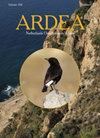Semi-Automated Counts on Drone Imagery of Breeding Seabirds Using Free Accessible Software
IF 1.3
4区 生物学
Q3 ORNITHOLOGY
引用次数: 3
Abstract
Long-term monitoring of breeding seabirds is fundamental for assessing the conservation status of their populations. Whereas traditional monitoring is often time consuming and has disadvantages, such as observer bias or disturbance to the breeding grounds, the use of uncrewed aerial vehicles (UAVs or drones) has proven to be an efficient alternative by allowing non-invasive monitoring of inaccessible areas. Nonetheless, the use of drones for monitoring wild populations brings forth a new challenge, namely the handling of large amounts of data (images), usually negating the efficiency of the previous steps. Diverse methodologies have been developed to deal with this issue, but they usually involve the use of commercial software, that reduces the accessibility of users with limited resources. We tested if the popular free software ImageJ could compete in terms of efficiency (i.e. accuracy and processing time) with other commercial software. We obtained similar values of agreement between manual and semiautomated total counts of individuals (99.1%), reducing the analysis duration fivefold. In addition, we propose a correction factor in the detection of incubating individuals based on the assessment of the individual behaviour of 10% of the birds present in each colony. Following this correction, we were able to estimate the total number of incubating birds with a 103.5% agreement with manual counts, reducing the time invested up to threefold. Thus, we show support for the use of free software (ImageJ) as a good low-cost alternative for users of drone imagery in assessing breeding birds and as a conservation tool.使用免费可访问软件对繁殖海鸟的无人机图像进行半自动计数
对繁殖海鸟的长期监测是评估其种群保护状况的基础。尽管传统的监测往往耗时且有缺点,如观察者的偏见或对繁殖地的干扰,但使用无人机(UAV或无人机)已被证明是一种有效的替代方法,因为它允许对无法进入的区域进行无创监测。尽管如此,使用无人机监测野生种群带来了一个新的挑战,即处理大量数据(图像),通常会否定之前步骤的效率。已经制定了多种方法来处理这个问题,但它们通常涉及使用商业软件,这减少了资源有限的用户的可访问性。我们测试了流行的免费软件ImageJ是否可以在效率(即准确性和处理时间)方面与其他商业软件竞争。我们在手动和半自动的个体总数之间获得了相似的一致性值(99.1%),将分析持续时间缩短了五倍。此外,我们根据对每个群体中10%的鸟类的个体行为的评估,提出了一个检测孵化个体的校正因子。经过这一校正,我们能够估计孵化鸟类的总数,与人工计数的一致性为103.5%,将投入的时间减少了三倍。因此,我们支持使用免费软件(ImageJ),将其作为无人机图像用户评估繁殖鸟类的一种低成本的好选择,并将其作为一种保护工具。
本文章由计算机程序翻译,如有差异,请以英文原文为准。
求助全文
约1分钟内获得全文
求助全文
来源期刊

Ardea
生物-鸟类学
CiteScore
2.10
自引率
0.00%
发文量
49
审稿时长
>12 weeks
期刊介绍:
Ardea is the scientific journal of the Netherlands Ornithologists'' Union, and is published since 1912. The journal welcomes manuscripts reporting significant new findings in ornithology, in particular those covering the ecology, life history, and evolution of birds, and including sound descriptive work. Ardea publishes Original research papers, Short notes and Book reviews. In addition to the regular three issues per year, Ardea publishes specials that contain conference or workshop proceedings (produced on request).
 求助内容:
求助内容: 应助结果提醒方式:
应助结果提醒方式:


